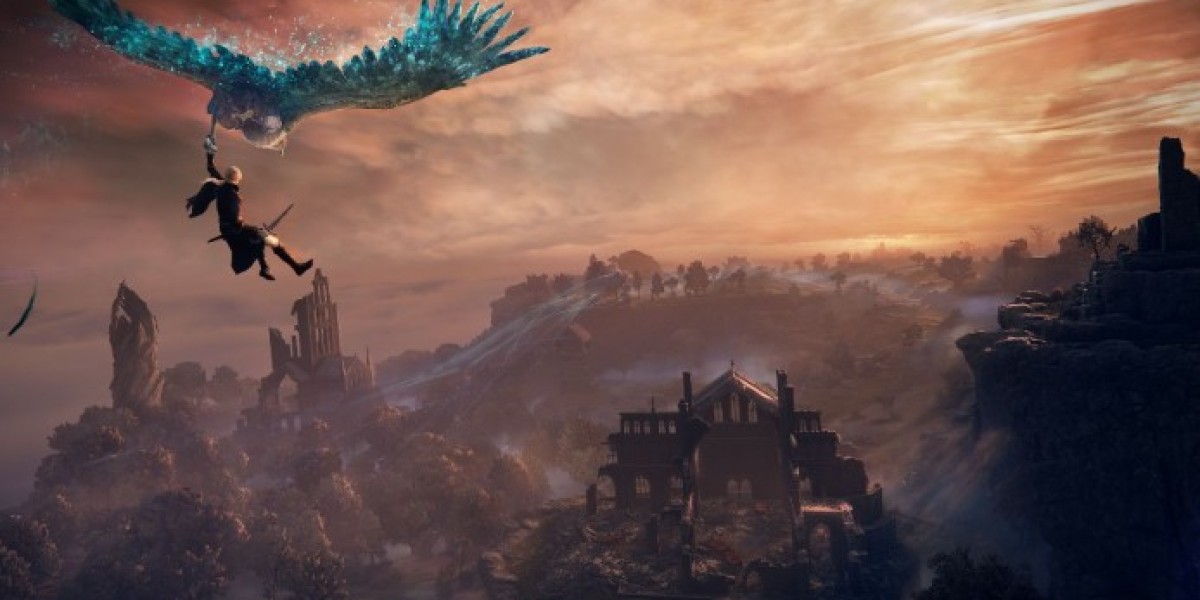How This Attack Increases Difficulty
The Tail Slam is a powerful tool that would dramatically alter the flow of Elden Ring Items the battle and heighten the challenge for the player in several ways. By introducing both environmental and combat hazards, the attack forces the player to adapt quickly, increasing the complexity and difficulty of the fight. Here’s how this move makes the encounter harder:
1. Forced Mobility: No Safe Spot
The Tail Slam requires players to be constantly moving in order to avoid the devastating effects of the shockwave and acid pools. Players can no longer remain stationary or focus entirely on attacking. Here’s how it plays out:
Constant Positioning: Players can’t risk staying in one spot for too long because they’ll be forced to dodge the shockwave or escape the acid pools that form afterward. This means that even while focusing on the dragon, they must also remain aware of their surroundings.
Lack of Cover: The spikes and acid pools limit the available safe spots. Players may have to make difficult choices about when to attack and when to move, and these choices will only get harder as the arena becomes more hazardous.
2. Environmental Hazards: Avoidance Is Key
The Tail Slam doesn’t just damage the player directly—it also transforms the environment into an obstacle course, forcing players to think about more than just the dragon's movements. Here’s how these environmental hazards change the dynamic:
Acidic Pools: After the slam, the acid pools not only deal damage over time but also slow down movement, making it even harder for players to avoid subsequent attacks. Stepping in the acid could force a player to waste precious time healing or recovering, making them more vulnerable.
Spikes and Terrain Changes: The spikes that rise from the ground after the slam block paths and force players to constantly recalculate their movements. The arena may even become smaller as parts of the terrain break away or collapse, making it harder to navigate. Players need to continuously adjust their tactics as the arena changes with each slam.
3. High Risk, High Reward Combat
The Tail Slam forces players to balance offensive play with defensive caution:
Timing Attacks: With the risk of the shockwave or acid affecting the player, they must time their attacks carefully, striking during windows when the dragon isn’t charging up for the slam or when they can move freely.
Managing Threats: Players must decide whether to go in for a quick attack or back off, knowing that attacking too aggressively could leave them exposed to the slam's effects. It requires players to manage risk and decide the right moments to push for damage.
4. Increased Pressure Over Time
As the battle continues, the frequency of the Tail Slam increases, and the environmental decay becomes more pronounced:
More Frequent Slams: The longer the fight goes on, the more often the Tail Slam occurs. With each new slam, the player is faced with even more hazards to avoid and less safe ground to maneuver.
Environmental Pressure: The acid and spikes only worsen over time, turning the once-safe areas into danger zones. Players must stay on high alert as the battlefield evolves, constantly adapting to the shifting landscape while avoiding being overwhelmed by the hazards.
5. Additional Layers of Difficulty:
Critical Moments: As the tail begins to lift, the dragon’s movements and the tremors in the ground force players to anticipate the attack and move into a better position—whether that’s to attack, evade, or find a safer spot.
Coordinated Attacks: If the fight is set in a multiplayer environment, the Tail Slam becomes even more dangerous, requiring players to coordinate movement and positioning while dealing with the arena’s hazards. The shockwave and acid might affect multiple players, forcing them to split attention between the dragon and each other’s survival.
In Summary:
The Tail Slam adds layers of difficulty to the fight in multiple ways:
Environmental Changes: The arena becomes increasingly hazardous, forcing players to constantly adapt.
Mobility Pressure: Players can’t stay stationary and must remain alert to avoid damage from the dragon’s shockwave and the acid pools.
Tactical Decisions: Players need to balance offense and defense, deciding when to attack and when to evade or heal, all while managing multiple threats.
Progressive Challenge: As the fight drags on, the Tail Slam becomes more frequent, and the environment becomes more dangerous, increasing pressure on players.
Ultimately, this attack transforms the Gaping Dragon into a multi-dimensional threat, requiring players to engage in high-level movement, awareness, and tactical planning in order to overcome the encounter. Would you like to explore how this attack interacts with other abilities or buy Elden Ring Runes how it would be balanced across different phases of the fight?







